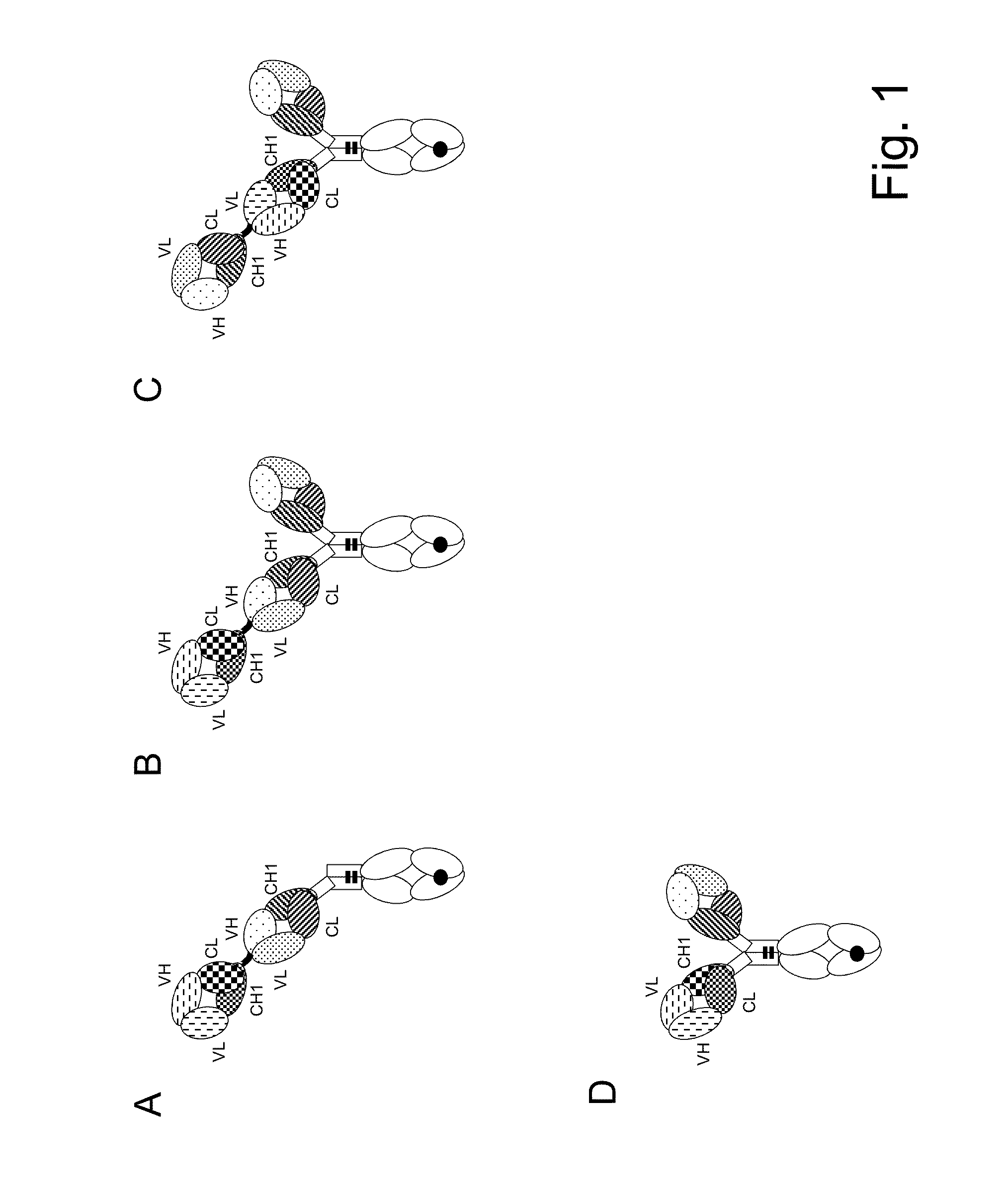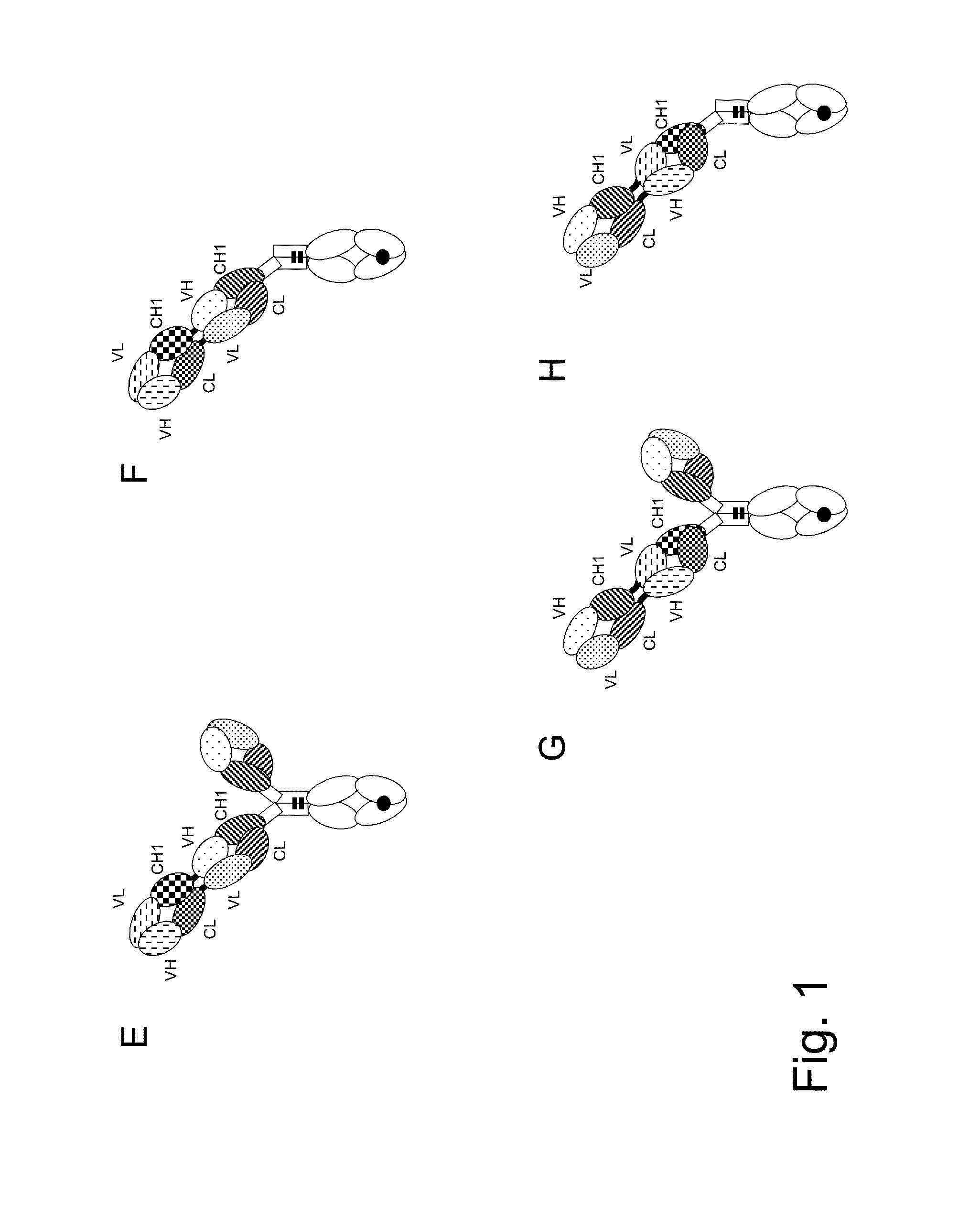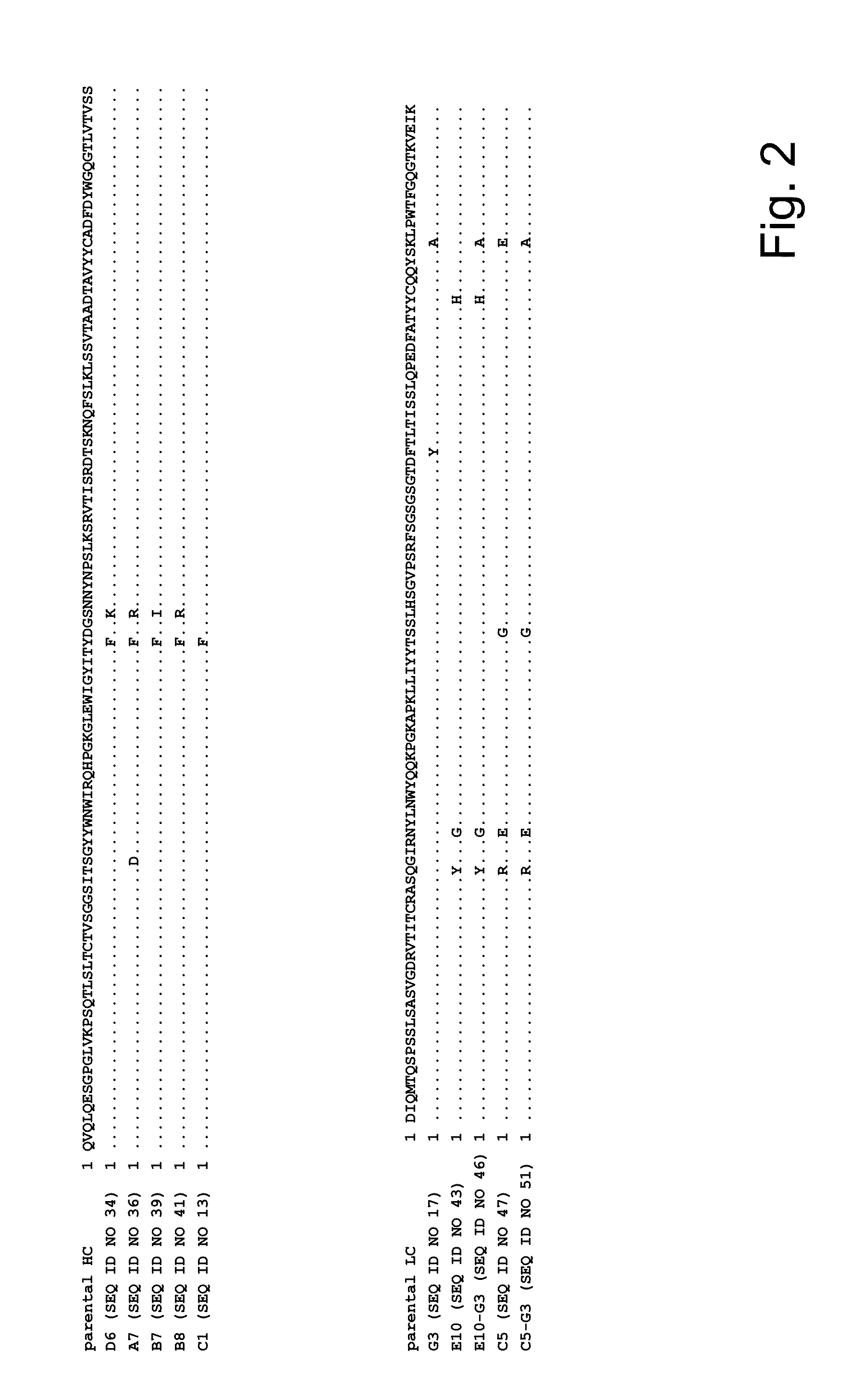Bispecific t cell activating antigen binding molecules
- Summary
- Abstract
- Description
- Claims
- Application Information
AI Technical Summary
Benefits of technology
Problems solved by technology
Method used
Image
Examples
example 1
Affinity Maturation of Anti-MCSP Antibody M4-3 / ML2
[0304]Affinity maturation was performed via the oligonucleotide-directed mutagenesis procedure. For this the heavy chain variant M4-3, and the light chain variant ML2 were cloned into a phagemid vector, similar to those described by Hoogenboom, (Hoogenboom et al., Nucleic Acids Res. 1991, 19, 4133-4137). Residues to be randomized were identified by first generating a 3D model of that antibody via classical homology modeling and then identifying the solvent accessible residues of the complementary determining regions (CDRs) of heavy and light chain. Oligonucleotides with randomization based on trinucleotide synthesis as shown in Table 1 were purchased from Ella Biotech (Munich, Germany). Three independent sublibraries were generated via classical PCR, and comprised randomization in CDR-H1 together with CDR-H2, or CDR-L1 together with CDR-L2. CDR-L3 was randomized in a separate approach. The DNA fragments of those libraries were cloned...
example 2
Preparation of MCSP TCB (2+1 Crossfab-IgG P329G LALA Inverted) Containing M4-3(C1) ML2(G3) as Anti MCSP Antibody and Humanized CH2527 as Anti CD3 Antibody
[0322]The variable region of heavy and light chain DNA sequences were subcloned in frame with either the constant heavy chain or the constant light chain pre-inserted into the respective recipient mammalian expression vector. The antibody expression was driven by an MPSV promoter and carries a synthetic polyA signal sequence at the 3′ end of the CDS. In addition each vector contains an EBV OriP sequence.
[0323]The molecule was produced by co-transfecting HEK293-EBNA cells with the mammalian expression vectors using polyethylenimine (PEI). The cells were transfected with the corresponding expression vectors in a 1:2:1:1 ratio (“vector heavy chain Fc(hole)”:“vector light chain”:“vector light chain Crossfab”:“vector heavy chain Fc(knob)-FabCrossfab”).
[0324]For transfection HEK293 EBNA cells were cultivated in suspension serum-free in C...
example 3
Preparation of CEA TCB (2+1 Crossfab-IgG P329G LALA Inverted) Containing CH1A1A 98 / 99 2F1 as Anti CEA Antibody and Humanized CH2527 as Anti CD3 Antibody
[0330]The variable region of heavy and light chain DNA sequences were subcloned in frame with either the constant heavy chain or the constant light chain pre-inserted into the respective recipient mammalian expression vector. The antibody expression was driven by an MPSV promoter and carries a synthetic polyA signal sequence at the 3′ end of the CDS. In addition each vector contains an EBV OriP sequence.
[0331]The molecule was produced by co-transfecting HEK293 EBNA cells with the mammalian expression vectors using polyethylenimine (PEI). The cells were transfected with the corresponding expression vectors in a 1:2:1:1 ratio (“vector heavy chain Fc(hole)”:“vector light chain”:“vector light chain Crossfab”:“vector heavy chain Fc(knob)-FabCrossfab”).
[0332]For transfection HEK293 EBNA cells were cultivated in suspension serum-free in CD ...
PUM
 Login to View More
Login to View More Abstract
Description
Claims
Application Information
 Login to View More
Login to View More - R&D
- Intellectual Property
- Life Sciences
- Materials
- Tech Scout
- Unparalleled Data Quality
- Higher Quality Content
- 60% Fewer Hallucinations
Browse by: Latest US Patents, China's latest patents, Technical Efficacy Thesaurus, Application Domain, Technology Topic, Popular Technical Reports.
© 2025 PatSnap. All rights reserved.Legal|Privacy policy|Modern Slavery Act Transparency Statement|Sitemap|About US| Contact US: help@patsnap.com



